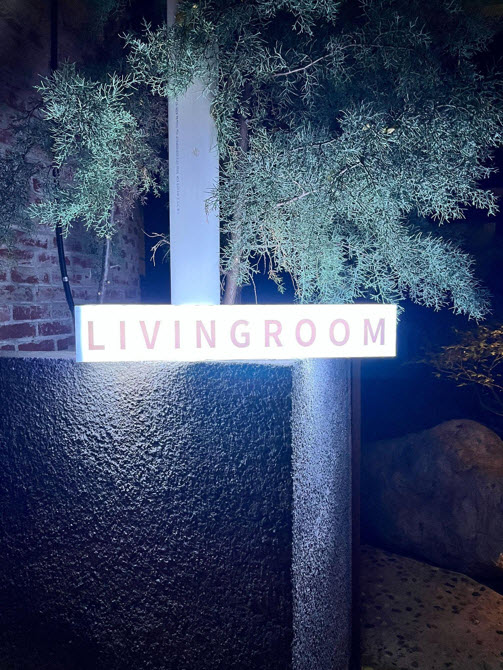
LIVINGROOM My Allée, Itaewon
On November 10, the sounds of chairs banging and vases clanging rang across a beautifully decorated space in Itaewon. The collection of sounds was part of the opening performance that signaled the beginning of LIVINGROOM My Allée Itaewon, a newly opened space for experimenting with culture and arts. As can be expected from the name “Extended Samul nori,” the performance was a rendition of the Korean traditional music genre Samul nori. The unexpected twist, however, was that everyday living room objects were used for the performance instead of Korean percussion instruments, like in John Cage’s “Living Room Music.” The performance was the product of a collaboration project between SNU students and My Allée, a select shop that sells lifestyle products. The participating students were all enrolled in at least one course that taught concert planning and management. From the ideation stage to the final event, the students were involved in every stage of the three-week project.
Experimenting with Classroom Knowledge Outside the Classroom
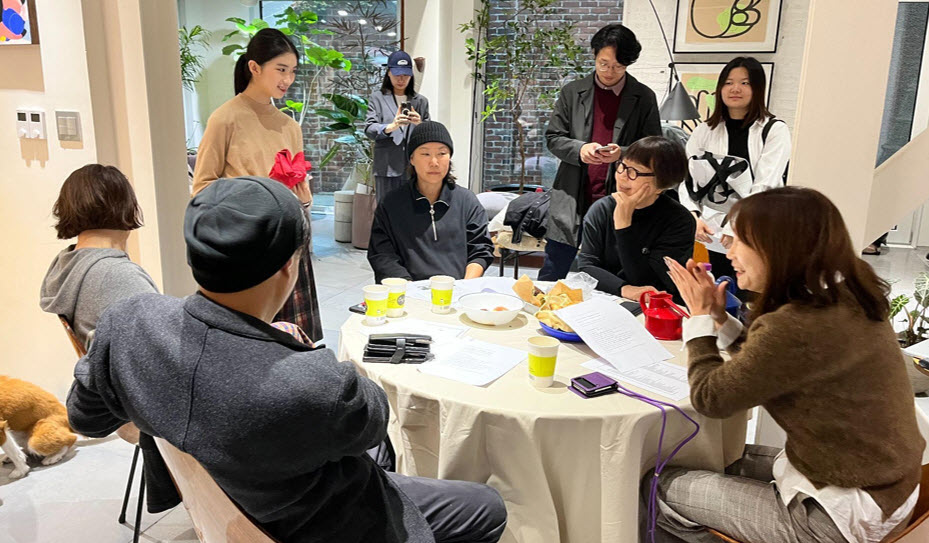
Participating Students and Staff at My Allée Discussing the “Livingroom Project”
Named the “Livingroom Project,” the project between the SNU students and My Allée was an idea developed by the director of My Allée and Professor Kim Sngkn when they were discussing potential contents to celebrate the opening of the new space. Professor Kim had wanted to provide a hands-on learning opportunity for students taking practical courses to apply their knowledge outside the classroom setting, and the LIVINGROOM opening performance was the perfect occasion for such endeavor. Since the previous semester, Kim started employing such project-based learning contents, where students could learn through sharing and testing their ideas. Students who took the “Seminar in Korean Contemporary Music based on Korean Traditional Music'' designed, developed, and directed the “Final Event – 100th Anniversary,” the ending event of the Ligeti Festival, which celebrated the 100th anniversary of the birth of the Hungarian composer György Ligeti.
Developing upon the experience from the previous semester, Kim enhanced his project-based learning methods through opening participation to a wider range of students taking different courses. By broadening the participation spectrum, he thought students could strengthen their interdisciplinary skills through collaborating with diverse students from different disciplines. Sign-up links for the project were shared with all students enrolled in classes related to performance planning and management, and students from a total of three practical courses participated as a result: the “Korean Composer’s Forum,” the “Korean Music Concert Planning,” and the “Performing Arts Workshop.” Students from the Department of Korean Music, Percussion Major, were also recruited to both participate in the planning process and perform on the day of the event.
Intertwining Ideas Across Disciplines
With Kim acting as a supervisor rather than a director, the students were involved in all stages of the “Livingroom Project.” The only instruction given was that they needed to devise a performance that incorporated John Cage’s “Living Room Music,” with the ideals of the company My Allée. The first step of planning the project, therefore, was to devise its concept. To do this, the participants gathered at the main shop of My Allée to gain a general idea of the company’s image. As My Allée gets inspiration from nature, many of the concepts that students considered were related to the unnoticed presence of nature in our daily lives.
Afterwards, the students compiled a list of potential objects from the company that they could use as decorations to match the concept and as instruments during the performance. The challenge here was choosing objects that aligned with the project’s vision and could produce clear sounds as instruments. After much trial and error, a wide variety of vases, pots, and plates were chosen.
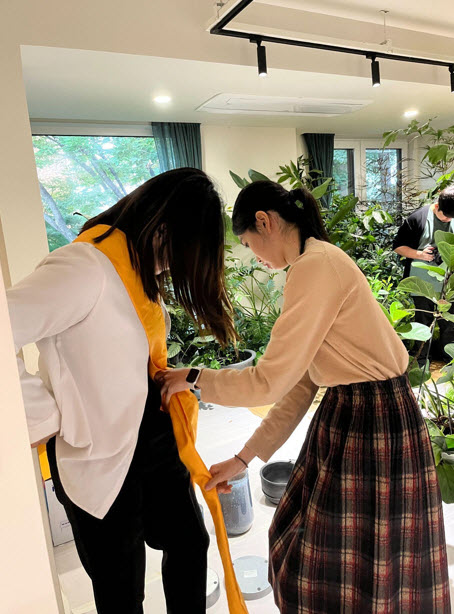
Kim Chaeyeon (Department of Fashion and Textiles) Working on the Costumes
With the ingredients ready, the students then designed the content of the performance, including the rhythm of the music, the acting required by the performers, and the costumes they would wear on the day. The diverse range of students from different fields of study was helpful when carrying out these processes as it increased the level of expertise across all areas of the project and allowed new innovative ideas to arise. Kim Danwoo (Department of Korean Music, Percussion Major), a student taking “Korean Music Concert Planning,” for example, used his knowledge from the course to help transform the experiences of individual students into ideas that can be included in the performance. Kang Dae Myung (Department of Korean Music, Korean Music Composition Major), who is researching the philosophy of American Composer John Cage in the course “Korean Composer’s Forum,” suggested methods to incorporate Cage’s philosophy on music into the opening event. Expertise was provided by Kim Chaeyeon from the Department of Fashion and Textiles when designing the outfits for the performance, where the final costumes elaborately fused traditional Korean designs with Western-style suits.
The Extended Samul nori: Developing Korean Culture
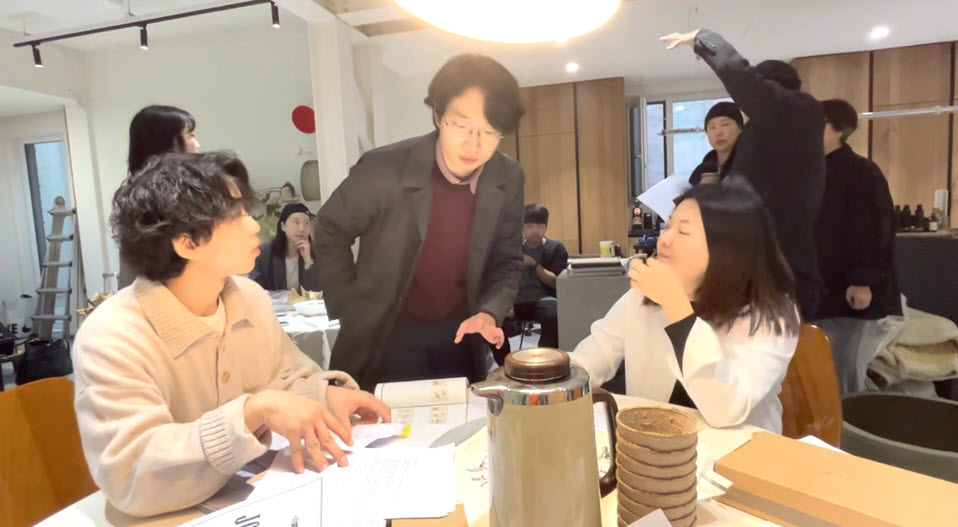
Participating Students Planning the Opening Performance
After much practice, adjustments, and on-site rehearsals, the students finally finished creating the opening performance for the opening week of LIVINGROOM My Allée, the “Extended Samul nori.” The performance followed the structure of Cage’s “Living Room Music,” consisting of four movements. The first movement, “To Begin,” had the performers come into the room disguised as the audience and suddenly start playing Cage’s first movement using the everyday objects in the room. The second movement, “Story,” was delivered through a video. To highlight the idea that art is all around us, however, the videos were screened in multiple places, including on the walls and in front of the toilet seat on a tablet. The third movement “Melody” featured three percussion performers and one pianist. The pianist played the melody of the original third movement on a toy piano, a tribute to Cage’s “Suite for Toy Piano,” and the three percussion performers provided background music using large vases. Finally, the performers who played the first movement gathered again to perform Samul nori using everyday objects for the fourth movement, “End.”
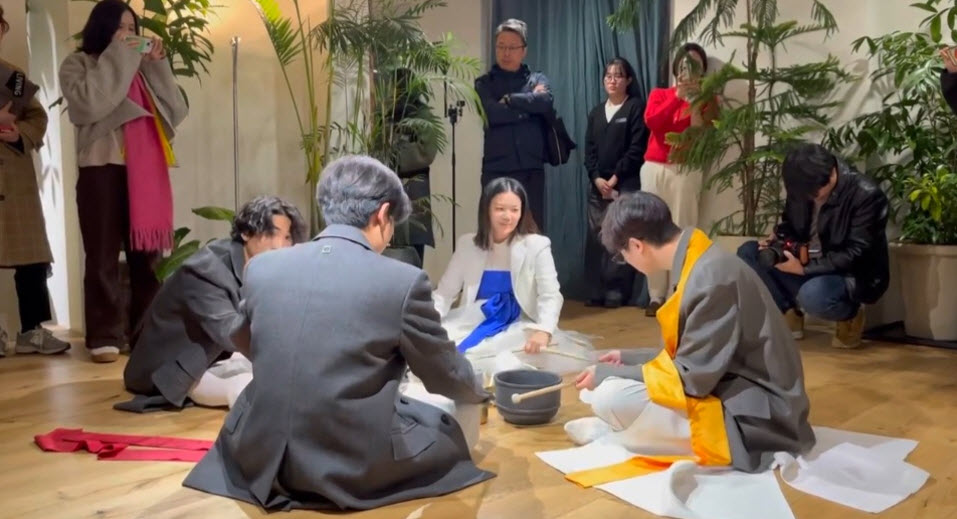
Department of Korean Music, Percussion Major Students Performing “End” at the LIVINGROOM, My Allée
Kim noted, “the final performance showcased the unlimited potential of ideas when those of different disciplines come together, and I think it served as an excellent example of experimental art that set the scene for the LIVINGROOM My Allée, Itaewon’s use in the future.” In his conversations with the audience after the performance, he was pleased to hear that they had enjoyed the ‘Extended Samul nori,’ with some feeling inspired by it.
The project also gave participating students a clearer idea of how the content they learn in class can be made relevant in the world outside of the classrooms. “After only learning the theory of concert management in class, the experience helped me understand the ways these theories are used in real-life scenarios,” noted Kim Danwoo. Having taken on the roles of performer and planner, he was able to approach the project from different perspectives. His experience further opened his horizons regarding Korean music, helping him develop as a Korean percussion performer.
At a time in which Korean culture is gaining more and more attention worldwide, expanding students’ understanding of its different aspects and encouraging them to experiment with it is crucial to developing the culture and augmenting the K-wave. In that sense, the project and the resultant “Expanded Samul nori” was timely, and through repeating its performance, domestically and overseas, it can help further spread the beauty of Korean culture to the world.
Written by Yeryoung Lee, SNU English Editor, yeryounglee@snu.ac.kr

